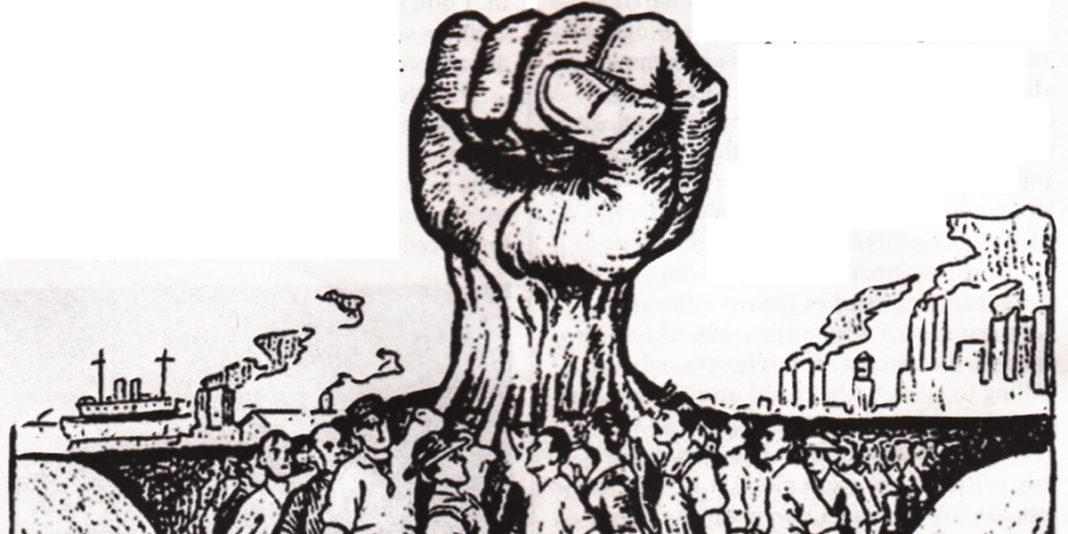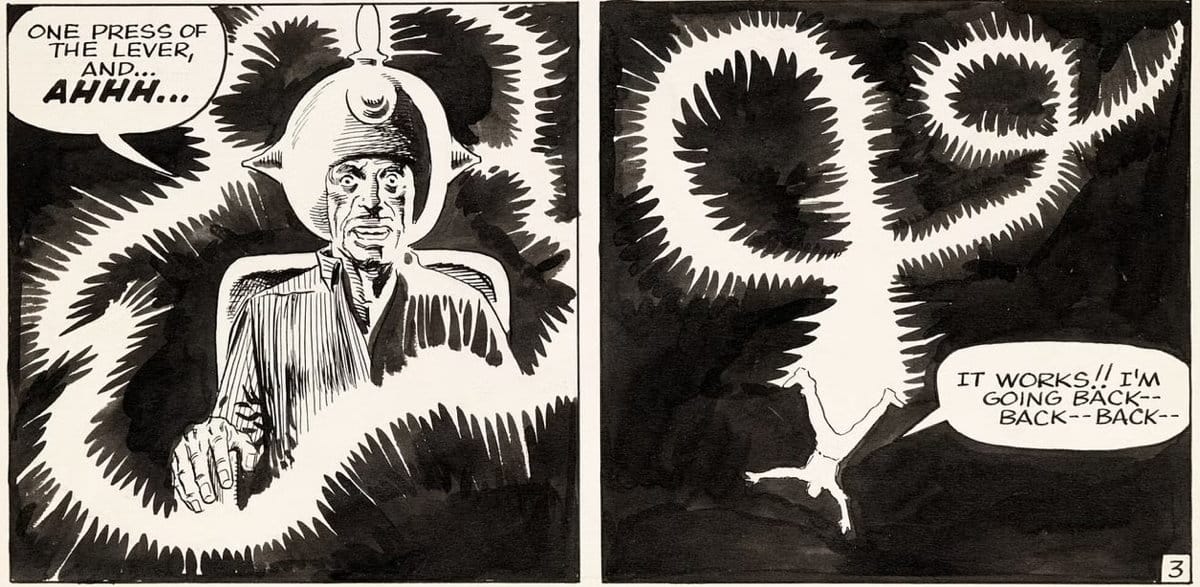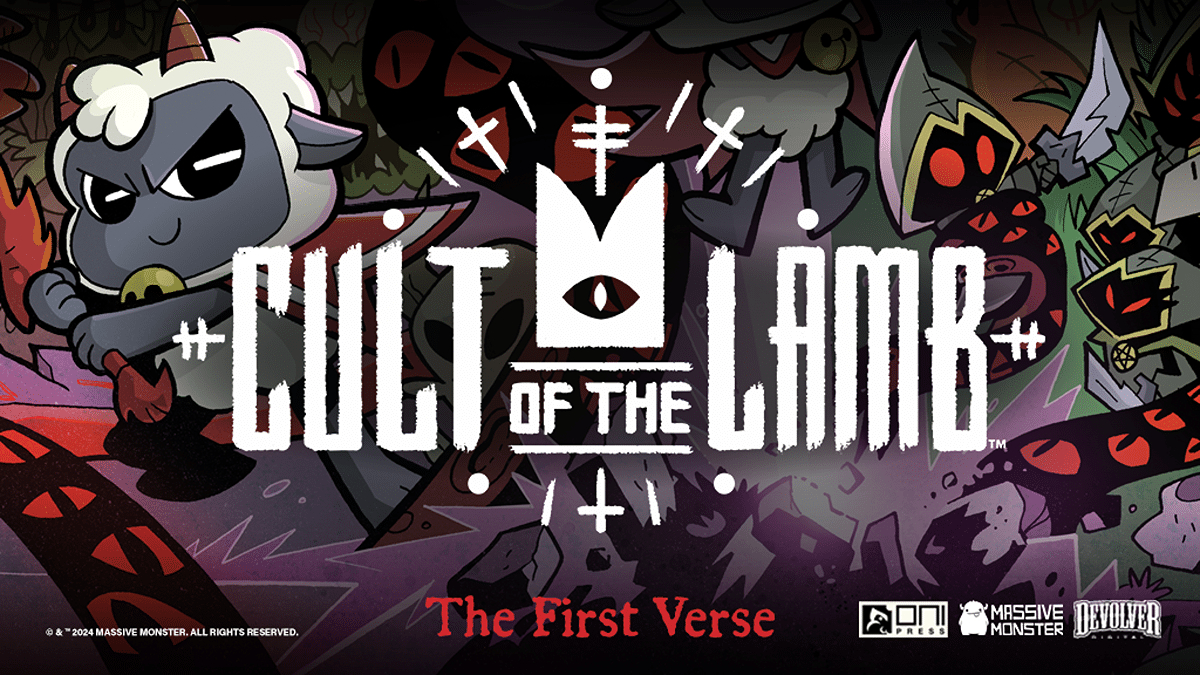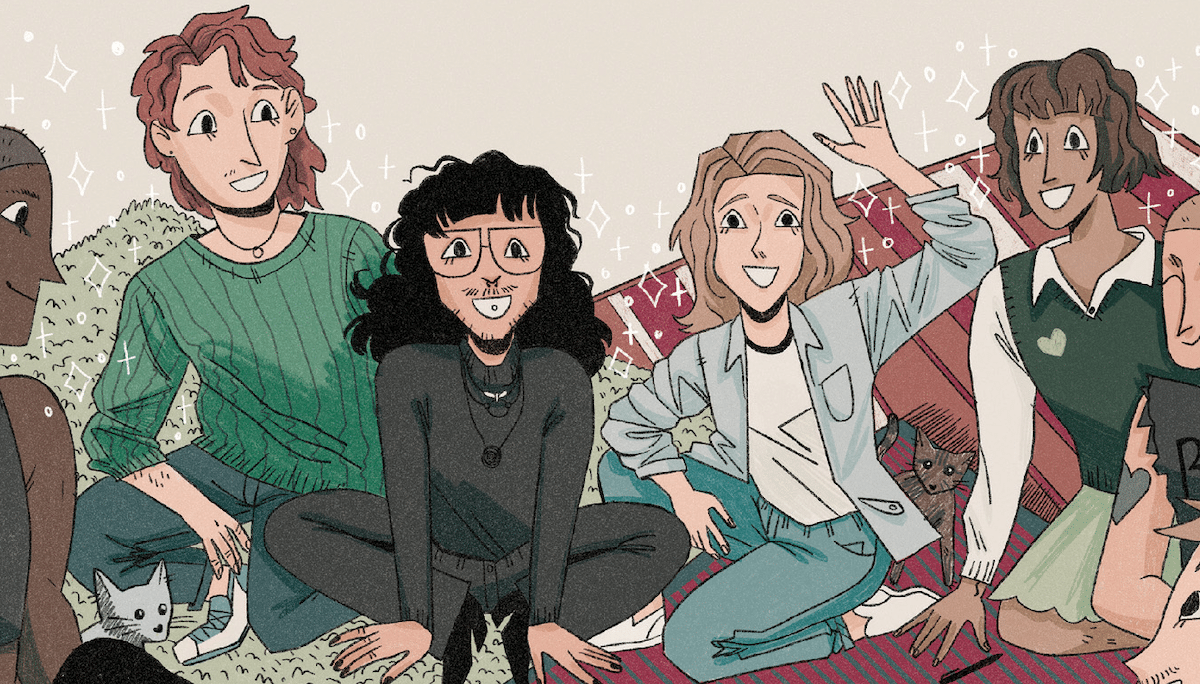A recent Gallup poll puts labor union approval at a 15-year high. Unions are growing particularly fast in media and publishing, where economic conditions have resulted in unprecedented and not always welcome, change. The number of unionized workers in internet publishing has increased a whopping 20-fold since 2010. To understand why there’s been an uptick in support for unions, it’s necessary to understand the economic realities of online media and publishing in 2019.
Here’s a hypothetical: a publisher experiences financial hardship as they attempt to navigate the turbulent waters of today’s media climate. Ad revenue is down, views and circulation are down, everything’s down except for costs (which are going up). In walks Messrs. Hedge Fund and Venture Capital. Like Joel Osteen or Tony Robbins, they promise a better way with a perfect smile and shiny suit. And you? Well, you’re not in much of a position to refuse them. You let yourself be taken in by promises of maintaining operational independence and profitability. The road to black is paved conspicuously with layoffs, slashed budgets, and ill-conceived attempts to rebrand. A few years later, one of two things will likely occur. One: You operate an empty vessel who invokes the specter of independence and objectivity, without follow through. Two: You will no longer exist.
For comics publishers, the cast of characters may be different, but the circumstances are largely the same. Surviving is a struggle. What counts for a competitive advantage these days? Intellectual property, but more specifically, licensing deals. Developing new intellectual property is costly, time-consuming, and did I mention the risk? Across the media spectrum, from TV to streaming, from comics to video games, licensing deals are some of the most consistently lucrative. While it’s not particularly new or groundbreaking for intellectual property acquisition to drive a company merger, what’s changed is the consolidation of power and specifically, those who wield it. This is the background necessary to understand the most recent calls for a union and guild in comics.
The Merger
“We’re going to take a look at efficiencies and identify a number of areas of growth as well.” David Steward II, The New York Times, May 8, 2019.
The Lion Forge and Oni Press merger began with a well-placed article in the New York Times. The intended outcome? To help both companies survive a challenging marketplace by combining publishing efforts. Under the merger, Oni would run all publishing efforts outside of Portland, Oregon under the leadership of James Lucas Jones. Lion Forge, founded by David Steward II and Carl Reed, would then be free to pursue other ventures. The merger was negotiated by Edward Hamati, the president of Polarity. Polarity is also the parent company of Syndicated Comics, which owns The Beat.
On social media, news of the merger was also met with news of layoffs. According to Oregon Public Broadcasting, Oni dismissed publicity director Melissa Meszaros, associate editor Desiree Wilson, and warehouse assistant Scott Sharkey. Over at Lion Forge, editor-in-chief Andrea Colvin, associate editor Christina “Steenz” Stewart, editor Jasmine Amiri, senior editor Amanda Meadows, and Kayla Tan, a production and logistics coordinator, were all let go.
Can't say anything about the merger. But I'll be looking for freelance work soon. Stay tuned and thanks to everyone reaching out so far.
— Vitamin Steenz #BLM (@oheysteenz) May 8, 2019
Stories about mergers often leave out the very real human cost towards economic prosperity and viability. Pushed for public comment on the lay-offs, Oni publisher James Lucas Jones said in an interview with Oregon Public Broadcasting, “I’m not looking at this from a people perspective but from a position perspective. None of the decisions were easy.”
It was a sentiment expressed numerous times over the coming days from those representing Lion Forge and Oni. Business decisions are often framed in this fashion. It’s a way to get people to think of numbers instead of the people behind the numbers. If there’s one good thing to come out of social media, it is that corporations can no longer hide behind a well-crafted single party narrative. As often occurs when creative industries are hit by layoffs, the call for a union was once again revived on social media. That’s where Sasha Bassett enters the picture.
Enter Sasha
Sasha Bassett is a PhD student in sociology and an instructor at Portland State University. Her research background includes the impact of gender on organizations as well as comics studies. Bassett is a student organizer and has been involved with issues concerning creative labor for over a decade. She felt called to action when news of the merger hit Twitter and two days later posted a 20-minute survey for collecting data around worker satisfaction and workplace climate within comics.
https://twitter.com/StillSashaBear/status/1126945006382505984
The main goal of the project is to serve as a baseline study for comics professionals to help them leverage improved working conditions. Bassett responded to a series of questions about the survey and its goals in an e-mail to The Beat. Bassett hopes to build off the 2013 work of Benjamin Woo by creating datasets for public consumption and dissemination. The Beat spoke to Woo last year about his comic conventions research. Woo, Bassett, and Stephanie Cooke (Creator Resource) all show an attempt to quantify the comics industry beyond publishing and purchasing numbers. There’s a growing movement to bring the academic research around comics out of purely academic circles and into the fresh public sunlight.
Cooke’s 2017 page rate survey provided a stark and startling look at the problem of chronic underpayment in the comics industry. The 2017 data was gathered from 142 self-identified comics professionals. The goal behind these efforts is to increase transparency around compensation and workplace practices. Keeping pay shrouded in mystery advantages those with privilege and actively disadvantages those historically discriminated against by the labor market.
For Bassett, the question isn’t why comics professionals need a union but rather, why haven’t they already unionized? Bassett speaks emphatically about the role of collective bargaining, adding “unions are versatile organizations that can serve as sources of mentorship, networking, and training for workers.”
There are, however, some very good reasons why unions do not yet exist in the world of comics. The National Labor Relations Act (NLRA) establishes criteria for unions. Passed in 1935 to help protect the rights of employees, encourage collective bargaining, and curtail harmful labor and management practices, the NLRA lays forth the rules and guidelines for union organizing. The National Labor Relations Board (NLRB) is in charge of administering the law.
It’s not like there haven’t been attempts to form unions and guilds in comics before. In 1978, a group of comics creators formed the Comic Book Creators Guild, and members included the likes of Paul Levitz, Neal Adams, Jim Shooter, Frank Miller, Walt Simonson, and Chris Claremont. Tony Harris went about attempting to form the Sequential Arts and Entertainment Guild in 2010. Then, in 2012, Eisner-award winning editor Rantz Hoseley renewed the call for a comics guild yet again. There appears to be at least some agreement concerning the poor treatment of comics professionals. People also seem to agree there should be some sort of collective effort to help enact change, but somehow a fully fledged effort never coalesces.
There’s a substantial difference between a union and a guild. A union is a collective bargaining organization for employees, and a guild is a collective bargaining organization for independent contractors. As many comics professionals tend to be independent contractors and not employees under one company, most calls to organize comics have been for creating a guild.
How do you solve a problem like organizing?
Saying you want a guild or union is one thing; actually forming one is an entirely different beast. How do you organize a disparate collective of workers? Bassett believes other industries, like construction, can serve as a template for comics. She says, “Another example can be found in a recent development with the Industrial Workers of the World (IWW), who has helped establish the IWW Freelance Journalists Union – comics could go a similar route and have all freelancers work within the same bargaining unit, rather than with smaller groups oriented around individual jobs.”
Bassett adds, “At this point, I think the biggest obstacle for workers themselves is the culture of silence around their conditions – folks seem very reluctant to say anything negative out of fear they might be blacklisted. I think a union (or comparable workers’ organization) would certainly be a good step in the right direction on addressing this.”
The Beat’s legal expert Jeff Trexler helped me parse some of the complications around union formation. Mr. Trexler notes, “The National Labor Relations Act protects employees, not independent contractors — whereas a union has a legal right to engage in collective bargaining and to strike, freelancers who try to do that can be fired or blacklisted without penalty; indeed, freelancers refusing to follow the terms of their contract could be found in breach and liable for damages.”
So again for the folks in the back, independent contractors attempting to form a union are not considered a protected class by the National Labor Relations Act. There has also been limited success with organizations like the Freelancers Union and other similarity situated groups. Despite using the language of organizing and collecting dues from members, they amount to little more than lobbying arms and associations. Bringing these issues up is not meant discount the work done by these organizations, only to highlight the complex nature around organizing freelance workers and independent contractors.
How do you know if you are an employee or an independent contractor? Well, there’s a test for that based on a 1968 Supreme Court case: NLRB v. United Insurance Company of America. As we don’t give legal advice at The Beat, we urge you to read up on whether you fall under the class of employee or contractor using official sources like this one from the IRS. In short, it comes down to the level of autonomy you have as a worker. The test takes into consideration your behavior, methods of payment and reimbursement, and the overall relationship you have with your employer. Why does any of this matter? Well, it’s a little something called antitrust — cue threatening music and lightning.
Gird your loins, folks; there is nothing sexier than antitrust.
Independent contractors cannot legally enter a union thanks to the Sherman Act. Passed in 1890, the act safeguards against monopolistic practices. At the time of passage, it was often used as a cudgel against labor organizing, hence the 1914 passage of the Clayton Act, which exempted concerted labor activities from antitrust. Not protected by the Clayton Act, however, are independent contractors. Independent contractors are left out of this exemption because business owners banding together to set a price is price-fixing, which is illegal as it constrains competition. So because independent contractors are in charge of setting their price and are (generally) considered to be in competition with one another, they are not protected under the Clayton Act. To allow these people to band together would be considered a form of collusion, which the Sherman Act says is a big ol’ no-no.
I know what you are thinking: well, that’s not fair!
The gig economy has blurred the line between employee and employer. It’s another one of those instances where the law hasn’t caught up with modernity. It’s not all hopeless out there, however. States like New York and California are leading the way to extend civil rights employment law protection to independent contractors. Where those employed in the comics industry fall under these new guidelines, however, remains to be seen. The same economic and labor difficulties that exist in comics exist throughout the U.S. economy. You may ask yourself: what is the point of talking about unions when it doesn’t seem legal to form one? Let’s talk that through.

The Sticking Point(s)
One of the ground rules of organizing is to increase awareness about a topic. Raising awareness and knowledge about the comics workforce is what Bassett and others who have called on comics to talk more openly about labor practices are doing. It is one of the main goals of Bassett’s survey. There are a few significant trends which have stuck out to Bassett as she looks over the survey data. The Beat spoke with Bassett when her survey was only three days old, and the figures included below are representative of this fact.
- Over 72 percent of the participants are freelance workers; they work in all facets of the industry.
- 55 percent have received specialized training for creative labor (usually in the form of a BA degree); only 19 percent received training for their specific job in comics.
Working in comics is deeply tied to an individual’s dreams and life goals. Even if some had the opportunity to leave comics, most would not choose to do so. The result of the passion around making comics is that people are often willing to accept unfair labor practices and working conditions. It’s not a fair trade-off.
The above statistics represent both the need for more transparency of employment practices as well as the difficulty with forming a union. As freelancers are employed in all aspects of the industry, it means classifying them as one type of employee (an artist) or another (a writer) is difficult. This type of classification is necessary to form a union. Not to get too in the weeds, but there’s a reason why this classification matters and it has to do with the language of unions.
A bargaining unit is the group of workers able to vote in elections for union representation. This unit is established under the community of interest standard set by the NLRB. Workers can share a community of interest in wages, hours, type of labor, and other factors of employment. Before 2011, employers could add employees to a bargaining unit so long as they could show they shared a community of interest. What did this mean? It meant employers could, in theory, work to defeat a union by adding more employees to the bargaining unit who would then be eligible to defeat a vote in favor of union representation.
In 2011, the Specialty Healthcare decision by the NLRB broadened the standard to include smaller bargaining units. Under the Specialty Healthcare rule, smaller groups of workers could form and vote in favor of union representation under the previous community of interest standard. Employers, however, could only add workers to this group if they could establish an “overwhelming community of interest.” The result was that it was more difficult for employers to add employees to prospective bargaining units. Specialty Healthcare was representative of a more favorable view of unions expressed by the Obama Administration. The Trump Administration has adopted an employer first approach, and its nominees to the NLRB represent this. In 2017, the new Republican majority board overturned the 2011 Obama-era rule which allowed the smaller bargaining units to exist.
So, where does this leave folks like Bassett and others who wish to improve the working standards and labor conditions within the industry? Well, here’s Bassett in her own words: “Folks also seem overwhelmed with the scale of unionizing comics. To this, I say that it is not an individual’s job to do all of the work. Talking to your peers, sending a few emails, showing up to meetings, all of these small efforts add up – ‘showing up’ is often the most powerful thing you can do to support the effort of folks who are organizing.”
Bassett believes in direct support of creators through their online stores, as this helps put more money in the pockets of your favorite creators. You can also support the work of Bassett’s Comics Workforce Study. Currently, Bassett is tabulating the results of her survey, but we can expect to see regular updates about her findings over the coming weeks.
One area we can look toward for some inspiration is efforts to unionize the video games industry. Game Workers Unite is an international, grassroots organization behind efforts to unionize video games, which has long suffered from exploitative labor practices. GWU combines awareness-raising efforts through publications and literature, alongside traditional, on-the-ground organizing through chapters and appearances at conferences. By providing support on the ground, GWU hopes to create an environment where labor organizing moves away from theoretical, into the practical.
The truth about organizing labor in comics is: there is no short-term fix. Organizing takes sustained effort, and people like Sasha Bassett are ready and willing to put in the work.








Unionization will never happen to the creative aspect of the industry. It’s the same in the game and vfx industry. You may be able to do it for the logistic and above the line staff, but remote work for senior positions is also on the increase. It would have been easier in the past to do it before the internet, but now you can offshore pretty much any job if you want to. It is impossible to stop a scab from crossing a line when there is no physical line. All you need now is a computer and internet access (along with the required art/computer skills) and you can do these jobs from almost anywhere. It’s not like factory work where the tools of production are centralized in a factory, so they have to draw from workers in that location. Even then, you can see them moving entire factories to different countries if it’s more profitable.
Yes, let’s unionize a dying industry!
Why shouldn’t workers draw be paid for physical and emotional labor to the sum of 30 dollars an hour plus full benefits as their employers file for bankruptcy? They earned it!
“Unionization will never happen to the creative aspect of the industry.”
I don’t see why we can’t give the highly educated administrative staff better pay and benefits in the meantime. Everyone aside from the CEO and his crony investor buddies is overworked and underpaid.
Comments are closed.